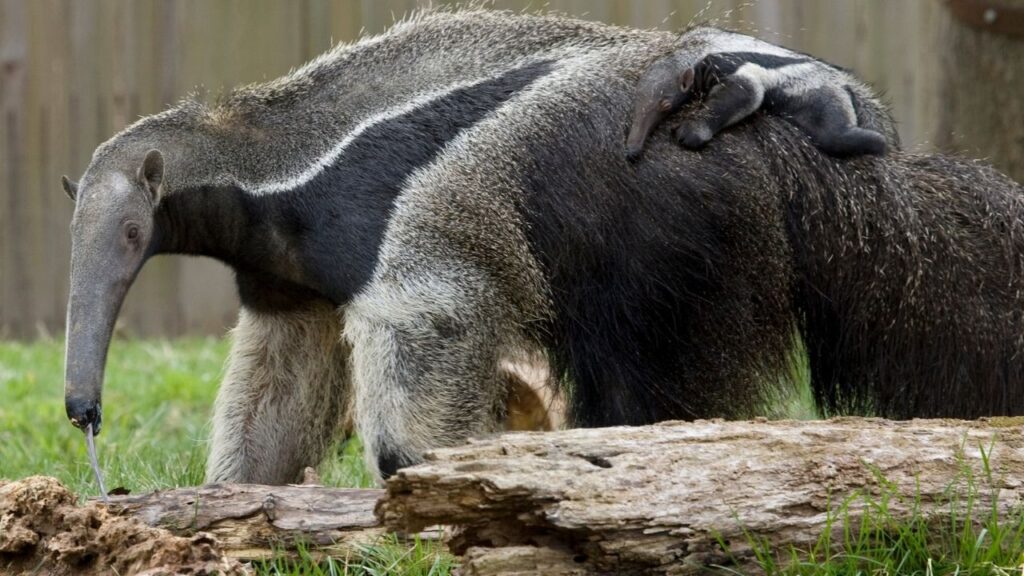Do Anteaters Attack Humans? Anteaters are generally non-aggressive and avoid human interaction, but they can defend themselves with powerful claws if threatened.
Anteaters are fascinating creatures known for their peculiar appearance, including long snouts, bushy tails, and sharp claws.
These unique animals, native to Central and South America, are often viewed as harmless insectivores. However, their strong defensive claws have raised questions about whether they pose any threat to humans.
In this article, we will explore the nature of anteaters, their behavior, and the likelihood of them attacking humans. [Do Anteaters Attack Humans?]
Understanding the conditions under which these animals might become defensive will help us coexist safely with them in the wild and in captivity.
Contents
What Are Anteaters?
Physical Features and Abilities
Anteaters are known for their extraordinary physical features, which make them perfectly adapted to their diet and habitat.
Their long, tubular snouts house an impressive, sticky tongue that can extend up to two feet. This tongue is ideal for capturing ants and termites, their primary food source.
Unlike most mammals, anteaters lack teeth, relying entirely on their tongue and strong stomach muscles to crush their food. [Do Anteaters Attack Humans?]
However, one of the most notable features of anteaters is their powerful claws. These claws are incredibly sharp and are primarily used for digging into anthills and termite mounds.
Additionally, they serve as a formidable defense mechanism against predators. Giant anteaters, the largest species, can grow up to seven feet long, including their bushy tails.
Other species, such as the silky anteater and the tamandua, are smaller but equally equipped with strong claws and similar physical adaptations.
Habitat and Behavior
Anteaters thrive in a variety of habitats, including rainforests, grasslands, and savannas. They are solitary animals, with each individual maintaining its territory and foraging alone.
Anteaters are primarily nocturnal or crepuscular, depending on the species, meaning they are most active during the night or early morning and late afternoon.
In their daily lives, anteaters are slow-moving and deliberate, often appearing uninterested in their surroundings unless they are foraging.
Despite their seemingly passive demeanor, they are always alert to potential threats. [Do Anteaters Attack Humans?]
When faced with danger, their primary instinct is to flee. However, if escape is not possible, they will stand their ground and prepare to defend themselves.

Can Anteaters Attack Humans?
Defensive Nature
Anteaters are not inherently aggressive animals. They do not hunt or attack humans or other large animals unprovoked. Instead, their behavior is largely defensive. [Do Anteaters Attack Humans?]
When approached by humans or predators, their initial response is usually to retreat. However, if they feel cornered or perceive a threat, they will take a defensive stance.
In such situations, an anteater may rear up on its hind legs, using its tail for balance. This posture allows them to use their front limbs, equipped with strong claws, to swipe at perceived threats.
While this behavior is primarily intended to ward off predators such as jaguars or pumas, it can pose a risk to humans who get too close.
When Do Anteaters Become Defensive?
Anteaters are most likely to become defensive under specific circumstances. These include:
- Feeling Cornered: When they are unable to escape from an approaching threat. [Do Anteaters Attack Humans?]
- Protecting Offspring: Mother anteaters are particularly protective of their young and may show increased aggression when they sense danger.
- Startled by Sudden Movements: Unintentional close encounters, such as when hikers or tourists unknowingly come too close, can provoke defensive reactions.
While rare, such situations highlight the importance of maintaining a safe distance from wild animals.
How Dangerous Are Anteater Claws?
Strength and Sharpness
Anteater claws are one of their most powerful assets. The giant anteater, for instance, has claws that can grow up to four inches long.
These claws are strong enough to tear through termite mounds and even the thick hide of a jaguar. [Do Anteaters Attack Humans?]
While their primary use is for foraging, these claws double as a defense mechanism against potential threats.
Potential for Injury
There have been a few documented cases of anteaters causing serious injuries to humans. One notable incident occurred in Brazil, where a hunter was fatally injured by a giant anteater after the animal felt threatened.
The claws inflicted deep wounds, which proved fatal. While such cases are exceptionally rare, they serve as a reminder of the potential danger posed by these otherwise docile creatures when provoked.
In captivity, anteaters are generally accustomed to human presence, but even in these controlled environments, handlers exercise caution. [Do Anteaters Attack Humans?]
Zookeepers are trained to handle anteaters carefully, respecting their space and avoiding situations that could trigger a defensive response.
Examples of Human-Anteater Interactions
Incidents in the Wild
In the wild, human-anteater interactions are usually peaceful. Anteaters are solitary and avoid contact with humans. [Do Anteaters Attack Humans?]
However, accidental encounters can occur, especially in areas where human activities overlap with their natural habitats. In such cases, anteaters may react defensively if they feel threatened or cornered.
In some regions, deforestation and habitat destruction force anteaters to venture closer to human settlements, increasing the likelihood of encounters.
Despite this, most interactions end without incident, as anteaters typically retreat when given the opportunity.
Encounters in Captivity
In captivity, anteaters are often part of conservation or educational programs in zoos and wildlife sanctuaries.
These facilities provide controlled environments where humans can observe these fascinating creatures up close. [Do Anteaters Attack Humans?]
While anteaters in captivity are usually more accustomed to human presence, they retain their natural instincts.
Handlers are trained to approach and care for anteaters with caution, understanding their potential for defensive behavior. Enclosures are designed to mimic their natural habitat while ensuring both animal and human safety.
Visitors are typically instructed to maintain a safe distance and avoid actions that could startle the animals.
Safety Tips for Encountering Anteaters
Avoiding Conflicts
To ensure a safe encounter with an anteater, whether in the wild or captivity, follow these guidelines:
- Maintain a Safe Distance: Always observe wildlife from afar to avoid causing stress or alarm.
- Avoid Sudden Movements: Sudden or loud actions can startle an anteater and provoke a defensive response. [Do Anteaters Attack Humans?]
- Respect Their Habitat: Do not approach or attempt to touch wild anteaters, especially if they are with their young.
What to Do if Threatened
If you find yourself in close proximity to an anteater and it takes a defensive stance, remain calm. Slowly back away without making sudden movements or loud noises.
Never attempt to corner or handle the animal, as this increases the likelihood of an aggressive response.
Final Verdict
Anteaters are unique, docile creatures that play an essential role in their ecosystems by controlling insect populations.
While they are generally harmless and avoid human contact, their powerful claws can pose a risk if they feel threatened. [Do Anteaters Attack Humans?]
Human attacks are extremely rare and often occur due to misunderstandings or accidental encounters. By respecting their space and behavior, we can safely coexist with these remarkable animals.
See Also: Do Pelicans Attack Humans? Pelicans Up Close
FAQs
Are anteaters aggressive?
No, anteaters are not naturally aggressive. They prefer to avoid conflict and only act defensively when they feel threatened.
What should I do if I encounter an anteater?
Maintain a safe distance and avoid sudden movements. If the anteater shows signs of defensiveness, calmly back away.
Can anteaters kill humans?
Although rare, their claws can inflict serious injuries that could potentially be fatal if the encounter escalates. [Do Anteaters Attack Humans?]
Do anteaters attack other animals?
Anteaters may defend themselves against predators, but they generally avoid interactions with other animals unless provoked.
Are anteaters safe to keep in captivity?
Yes, with proper care and respect for their behavior, anteaters can be safely kept in zoos or wildlife sanctuaries. However, handlers must always exercise caution due to their strong claws.
Conclusion: Do Anteaters Attack Humans?
Anteaters are remarkable animals with unique adaptations that make them effective insect hunters.
While they are not a threat to humans under normal circumstances, their claws can be dangerous if they feel provoked or threatened.
Understanding their behavior and respecting their space is key to ensuring safe and peaceful coexistence.
Whether in the wild or in captivity, anteaters are best admired from a safe distance, allowing both humans and animals to thrive in harmony.

Hello, I am Rosa Ellis, a mother of two and a wildlife blogger. I grew up in New York City, but I love exploring forests. I’ve traveled to places like Yellowstone National Park and the Amazon Rainforest to see animals up close. I know a lot about animal behavior and which animals can be dangerous to humans. Thanks for visiting my blog!

